Saturday, 22 November 2025


In an exclusive interview with AgroSpectrum, Dr Jennifer Holmgren, CEO of LanzaTech, outlines the company’s strategic pivot from carbon-to-fuels toward reshaping supply chains with innovations like a sustainable palm oil substitute. She emphasises how CO₂-derived solutions can succeed where past alternatives failed by combining scalability with functionality and cost-efficiency. On the aviation front, she highlights LanzaTech’s unique positioning across multiple Sustainable Aviation Fuel (SAF) pathways, backed by regulatory momentum in the U.S., EU, India, and China. She underscores the role of policy levers—from carbon pricing to long-term offtake agreements—in accelerating carbon-based SAF to commercial parity with fossil jet fuel. Looking ahead, Dr Jennifer Holmgren envisions a 2035 where airlines fly on CO₂-derived fuels and supermarket shelves carry carbon-based palm oil substitutes, marking a decisive shift toward a circular carbon economy.
LanzaTech has long been synonymous with carbon-to-fuels. With this palm oil alternative, you’re now reshaping supply chains beyond energy. How did this pivot emerge, and what does it signal about LanzaTech’s evolution ?
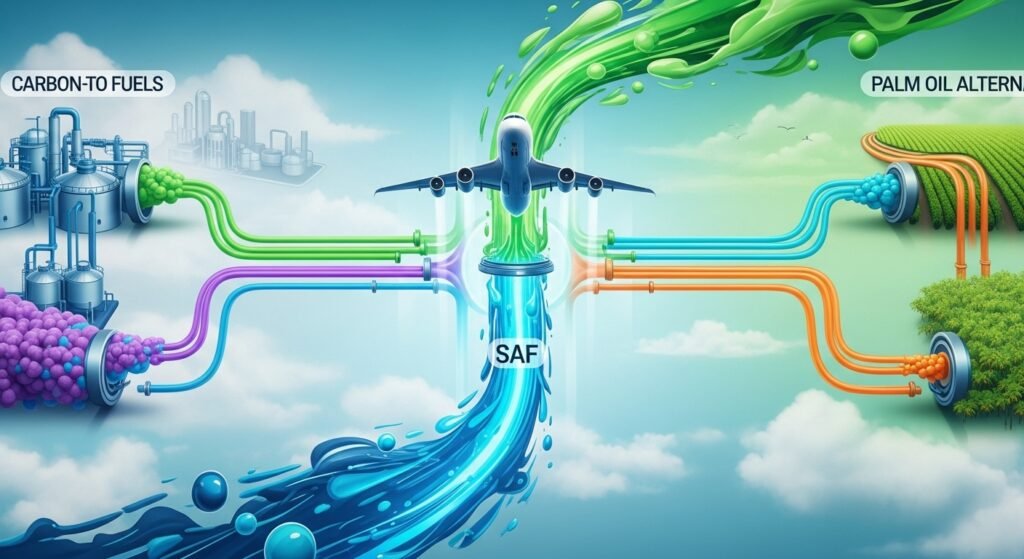
The pivot from a focus strictly on carbon-to-fuels to reshaping broader supply chains emerged as LanzaTech identified the critical need and opportunity for sustainable alternatives in global markets dependent on high-impact raw materials like palm oil. We have previously worked on chemicals such as ethylene that play a key role in the textiles space. This strategic shift signals LanzaTech’s evolution from a company focused solely on carbon recycling for energy purposes to a broader provider of sustainable solutions across various industries. It reflects a response to the need for systemic changes in supply networks that extend beyond energy.
Palm oil is arguably one of the world’s most entrenched commodities. Why do you believe this innovation could succeed where decades of alternatives have struggled ?

The unique aspect of this innovation lies in its ability to meet the functional needs of industries currently dependent on palm oil, coupled with a sustainable production method. Decades of alternatives have struggled due to scalability, cost-efficiency, or failing to meet functional requirements. LanzaTech’s technology leverages carbon waste as a feedstock, which is abundantly available, from waste CO2 to agricultural and forestry residues, thereby potentially undercutting the economic and environmental costs of palm oil production while maintaining the needed chemical properties.
The SAF market is projected to hit $250+ billion by 2050. Where does LanzaTech’s platform fit into that growth compared to legacy SAF technologies ?
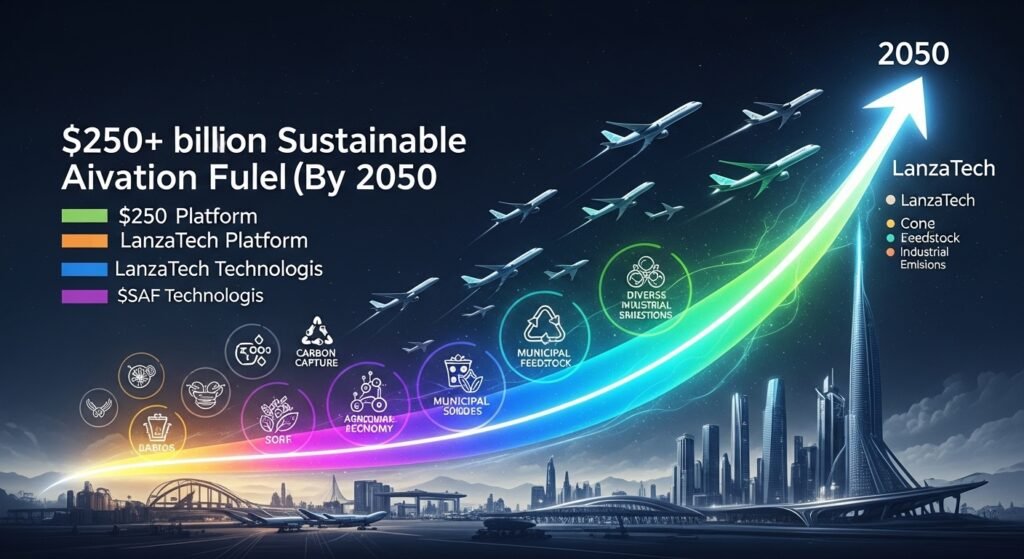
LanzaTech is exceptionally positioned to capitalise on the burgeoning $250+ billion SAF market by 2050, thanks to our ability to engage with all key SAF production pathways, including Alcohol-to-Jet (AtJ), Hydroprocessed Esters and Fatty Acids (HEFA), and Power-to-Liquid (PtL). Unlike legacy SAF technologies that often depend on specific feedstocks or face scalability limits, our versatile platform utilizes industrial off-gases and waste carbon, converting them into ethanol—a flexible and scalable intermediary for SAF production. This approach aligns perfectly with evolving global regulations that prioritize waste and residue-based fuels. By integrating into diverse markets and adapting to varied regulatory and raw material landscapes, we’re not just participating in the SAF market growth; we are actively driving it forward and setting new standards for sustainable aviation fuels.
Airlines are desperate for scalable, affordable SAF. What are the economics of CO₂-derived HEFA oils versus conventional feedstocks like palm, or soy ?
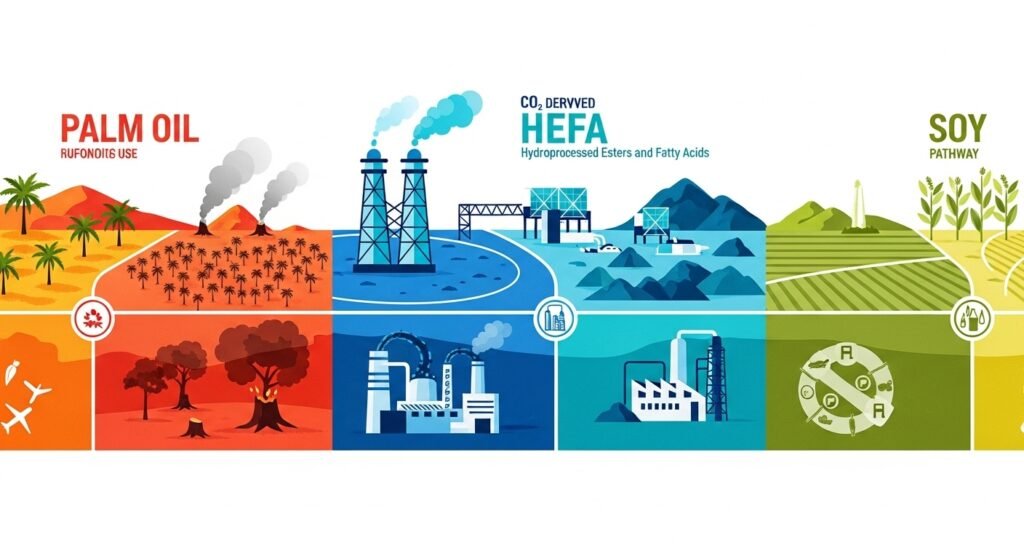
The economics of CO₂-derived HEFA oils could prove advantageous compared to conventional feedstocks due to lower raw material costs (captured carbon versus agricultural products) and potentially lower processing costs. These factors, combined with increasing regulatory support for low-carbon alternatives, could make CO₂-derived oils a scalable, affordable option for the aviation sector.
With the U.S. and EU offering billions in SAF subsidies and blending mandates, what policy levers are still missing to bring carbon-based SAF to parity with fossil jet fuel ?
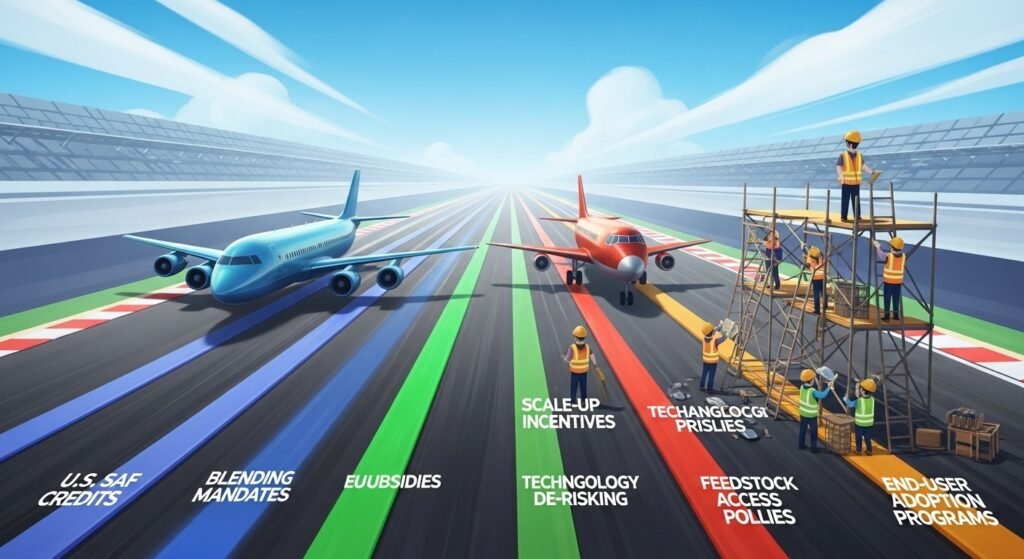
Price Stabilisation Mechanisms: Establishing floor prices or minimum subsidy guarantees can stabilize the market and attract sustained investments.
Enhanced Tax Credits and Incentives: Increasing the value or duration of tax credits for carbon-based SAF could accelerate adoption and infrastructure investments.
Carbon Pricing: Implementing a robust carbon pricing system for fossil fuels can make SAF more economically viable by reflecting the true cost of carbon emissions.
Streamlined Regulatory Approvals: Simplifying the approval process for new SAF facilities can reduce the time and cost of market entry.
Public-Private Partnerships: Encouraging collaborative efforts between the public sector, private industry, and academia can share risks and facilitate technological exchange.
Long-term Offtake Agreements: Government-led long-term agreements can provide SAF producers with market stability and financial predictability.
Global Alignment on SAF Standards: Harmonizing international SAF standards can reduce compliance costs and facilitate global trade.
These policy adjustments can create a more favorable environment for carbon-based SAF, helping bridge the gap to fossil jet fuels and supporting the aviation sector’s transition to sustainable practices.
Europe is tightening deforestation-linked import bans; the U.S. is ramping up SAF credits. How do regulatory tailwinds in different geographies shape your commercialization roadmap ?
The EU’s mandate of a 2 per cent blend of SAF escalating to 6 per cent by 2030 creates a sizable, stable demand for SAF, particularly beneficial for LanzaTech’s recycled carbon fuels. Furthermore, the specific sub-mandate for e-SAF (PtL) channels LanzaTech into a niche but growing segment of the SAF market, especially as green hydrogen availability increases, allowing us to extend our offerings in the EU market.
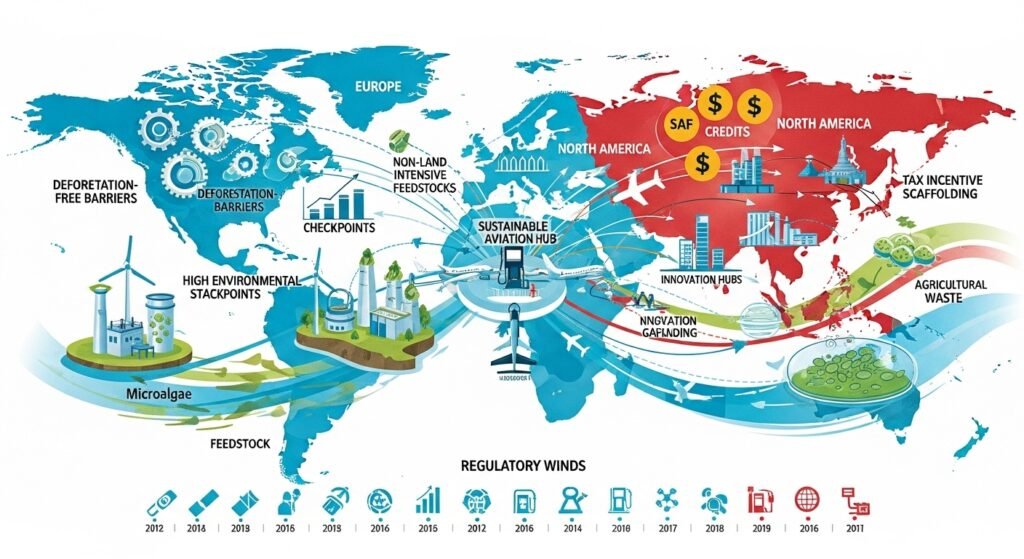
The UK’s increasing SAF mandates, expected to reach 10 per cent by 2030, combined with a specific cap on HEFA-feedstock SAF and a premium placed on advanced SAF solutions like ours, tailor a unique advantage for LanzaTech.
India’s evolving SAF mandate, which anticipates a rise to 5 per cent by 2030, opens a new and burgeoning market for LanzaTech’s fuels derived from industrial off-gases and waste biomass. Our products qualify under the National Biofuels Policy, positioning us to be a key player in helping India achieve its SAF targets while supporting our expansion strategy in a highly populous and growing aviation market. By increasing the production of biofuels from waste carbon including agricultural residues, India can reduce its dependency on oil imports and promote energy sufficiency. This aligns with the Government of India’s targets under the National Biofuel Policy, aiming to increase the blend of biofuels in the energy mix.
Each region’s specific policy approach guides our focus and commercial exertions, enabling us to adapt and prioritize product lines and collaborations that align with regional SAF demand projections and policy incentives. This targeted approach enhances our ability to capitalize on emerging opportunities for growth and impact in the global SAF market.
How close are we to a carbon circular economy ?
With innovations like the palm oil substitute, we’re moving closer to a carbon circular economy by displacing ecologically harmful commodities. Transforming wastes into valuable products aligns with rethinking carbon as a resource, and promoting utilization of recycled carbon. There are several ways India’s unique agriculture sector can benefit from embracing these innovative technologies.
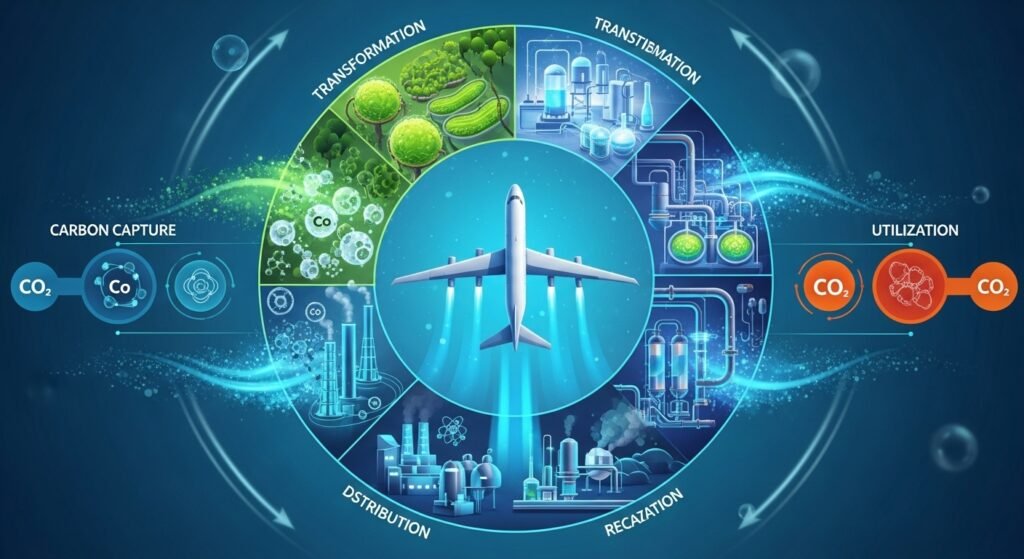
India generates a substantial amount of agricultural residues, like straw from rice and wheat, which often get burnt, contributing to severe air pollution issues, especially in Northern India. LanzaTech’s technology can convert these residues into valuable products such as ethanol, which can then be used to produce SAF or other biochemicals. This not only helps in reducing air pollution but also adds an economic value to what is otherwise considered waste.
By setting up bio-refineries that leverage local agricultural residues, there can be significant job creation in rural areas and the use of ethanol and other byproducts from bio-refineries can incentivize sustainable agricultural practices.
Will fossil and deforestation-linked commodities still dominate by 2035 ?
By 2035, I envision a world where airlines predominantly use CO₂-derived fuels and supermarket shelves are lined with sustainable, CO₂-based palm oil substitutes (and recycled carbon replaces virgin fossil carbon throughout!). This scenario is not just feasible; it’s within our grasp with continuous technological advancements and favorable regulatory environments.
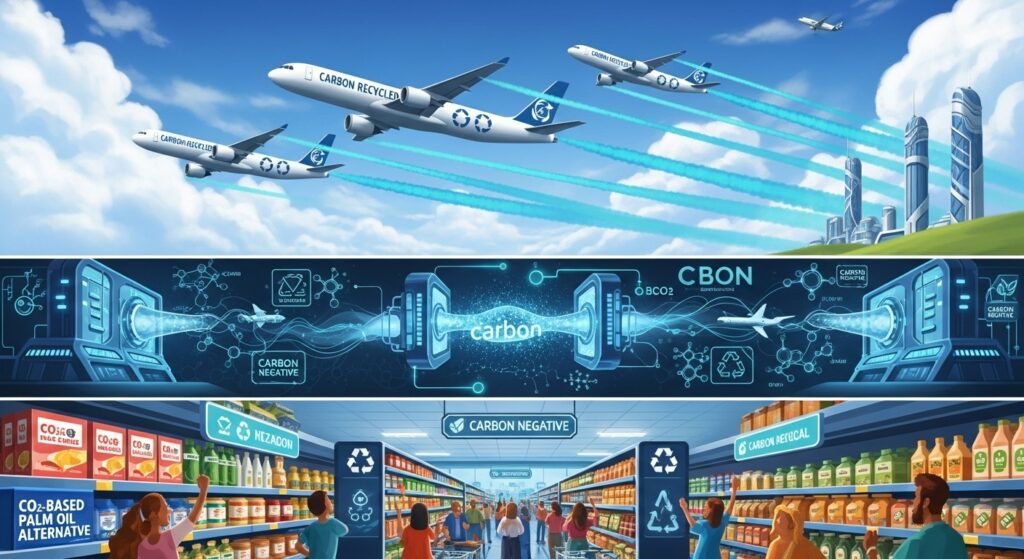
We are pioneering a shift towards a circular carbon economy, turning carbon waste into a valuable resource. Our commitment to innovation and collaboration is paving the way for global transformations in both the aviation sector and consumer markets. Achieving this vision will depend on the scale of deployment, strong global partnerships, and maintaining an economic advantage over traditional commodities. Together, we are setting a legacy of sustainability, ensuring ecological responsibility and economic prosperity coexist, spearheading a sustainable era for generations to come.
—- Suchetana Choudhury (suchetana.choudhuri@agrospectrumindia.com)